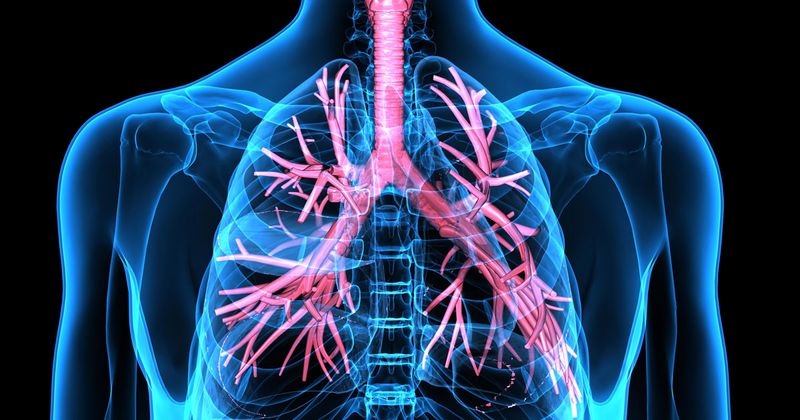Treatment options expanding for progressive fibrosing ILD
A speaker at the PFF Summit highlighted recent trials and therapeutic updates for progressive fibrosing interstitial lung disease.
“Progressive fibrosing ILDs encompass a number of different interstitial lung diseases. Classically, we think about idiopathic pulmonary fibrosis as the big chunk of that, but it encompasses patients with idiopathic nonspecific interstitial pneumonia, patients with connective tissue disorder ILDs, those with genetic or familial pulmonary fibrosis, unclassifiable ILDs, drug-induced as well as a number of others, including chronic [hypersensitivity pneumonitis], sarcoidosis and those that we otherwise can identify,” Vikramjit Khangoora, MD, pulmonary critical care physician at the Inova Fairfax Hospital in Annandale, Virginia, said during a presentation. “Unfortunately, at this time, there’s really no agreed-upon consensus definition of progressive fibrosing ILD.”

Khangoora said proposed diagnostic criteria for progressive fibrosing ILD include meeting at least one of the following over 24 months: relative decline in forced vital capacity 10% predicted; relative decline in FVC 5% to 10% predicted combined with increased extent of fibrosis on high-resolution CT; relative decline in FVC 5% to 10% predicted combined with worsening of respiratory symptoms; and worsened respiratory symptoms and increased extent of fibrosis on high-resolution CT only.
After a diagnosis is made, the decision is made to watch and wait or treat the ILD.
Nintedanib
Nintedanib (Ofev, Boehringer Ingelheim) has shown benefit for slowing the progression of fibrosing ILD.
In the double-blind, placebo-controlled, phase 3 INBUILD trial, nintedanib slowed the annual rate of decline in FVC compared with placebo in patients with progressive fibrosing ILDs other than idiopathic pulmonary fibrosis. The most common ILD diagnoses were hypersensitivity pneumonitis and autoimmune ILD.
Among 663 patients who underwent randomization, the adjusted rate of decline in FVC at 52 weeks was significantly lower in the nintedanib group vs. the placebo group (–80.8 mL vs. 187.8 mL per year). Similar results were seen for patients treated with nintedanib vs. placebo in the population with usual interstitial pneumonia-like fibrotic pattern.
There were no differences in quality of life or survival between the nintedanib and placebo groups.
Diarrhea occurred in two-thirds of patients assigned nintedanib and one-quarter assigned placebo.
The data were first reported at the European Respiratory Society International Congress 2019 and published in The New England Journal of Medicine. Read Healio’s full coverage of the trial.
In March 2020, the FDA approved nintedanib to treat patients with chronic fibrosing ILDs with a progressive phenotype. Nintedanib previously received FDA approval to treat IPF and to slow the rate of decline in pulmonary function among patients with ILD associated with systemic sclerosis or scleroderma.
“Nintedanib really should be started in patients with evidence of progressive fibrosing ILD. We have good data based on the INBUILD study that support its use,” Khangoora said.
Further, “there is no agreed-upon consensus definition of progressive fibrosing ILD; however, given approval of nintedanib for treatment of PF-ILD, we have adopted the criteria per the INBUILD study,” he said.
Pirfenidone
Pirfenidone (Esbriet, Genentech) is approved for the treatment of IPF.
The phase 2b, multicenter, double-blind, randomized controlled RELIEF trial evaluated pirfenidone in patients with four non-IPF progressive fibrotic ILDs: connective tissue disease-associated ILDs, fibrotic nonspecific interstitial pneumonia, chronic hypersensitivity pneumonitis or asbestos-induced lung fibrosis. The RELIEF trial was terminated prematurely due to slow recruitment.
Among 127 patients randomly assigned to pirfenidone or placebo, pirfenidone reduced the rate of FVC decline over 48 weeks when statistical analyses used imputed data. The estimated difference between the pirfenidone and placebo groups from baseline to 48 weeks was 3.53 FVC percent predicted.
There was no difference between the groups in quality of life, 6-minute walk distance or diffusion capacity for carbon monoxide.
The results were published in Lancet Respiratory Medicine in March 2021.
Pirfenidone was also evaluated for unclassifiable progressive fibrosing ILD. Khangoora referenced a double-blind, randomized, controlled, phase 2 trial that evaluated pirfenidone in 253 patients with unclassifiable progressive fibrosing ILD.
The primary endpoint was mean predicted change in FVC from baseline to 24 weeks, as measured by daily home spirometry. However, a prespecified analysis for the primary endpoint could not be performed due to high variability for individual daily home spirometry readings.
Pirfenidone reduced the rate of FVC decline over 24 weeks using site spirometry; the mean between-group difference was 95.3 mL, according to the results.
The study was presented at the ERS International Conference in 2019 and published in Lancet Respiratory Medicine. Read Healio’s coverage here.
Khangoora said he remains hopeful to see additional data on pirfenidone for progressive fibrosing ILD.
“Pirfenidone may also slow progression of disease; however, it is not currently FDA approved and current trials are flawed,” he said.
Inhaled treprostinil
Khangoora also discussed results of the INCREASE trial, which evaluated inhaled treprostinil (Tyvaso, United Therapeutics) for the treatment of pulmonary hypertension due to ILD.
“Up to this point, we’ve had no drugs that have had large randomized controlled trial data to support their use in patients with pulmonary hypertension and ILD. So, this trial was landmark,” Khangoora said.
Among 326 patients assigned inhaled treprostinil or placebo, inhaled treprostinil was well tolerated and significantly improved exercise capacity and other clinical outcomes over 16 weeks in this patient population. Inhaled treprostinil improved 6-minute walk distance by 31 m vs. placebo. Inhaled treprostinil showed benefit on secondary outcomes including reduction in NT-proBNP, risk for clinical worsening events and exacerbations of underlying disease.
The most frequent adverse events were cough, headache, dyspnea, dizziness, nausea, fatigue and diarrhea.
Results of the INCREASE trial were reported at the American Thoracic Society International Conference in 2020 and published in NEJM. Read Healio’s coverage here.
“Tyvaso is now approved for use in patients with group 3 pulmonary hypertension and should be considered in those patients,” Khangoora said.
